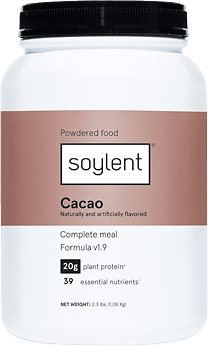Knowledge BaseYou're Questions Answered
How many calories are in soy protein powder?
Soy protein powder is a widely used plant-based protein supplement derived from soybeans. It is known for its high-quality protein content and is often chosen by vegetarians, vegans, and those with dairy allergies. Understanding the calorie content of soy protein powder is important for individuals who are monitoring their caloric intake or following specific dietary plans.
Calorie Content in Soy Protein Powder
The calorie content of soy protein powder can vary depending on the specific product and processing methods. On average, a typical 30-gram serving (about 1 scoop) of soy protein powder contains approximately 110 to 130 calories. This variation is influenced by factors such as the protein concentration, the presence of additional ingredients, and the level of processing1.
Breakdown of Nutritional Content
- Protein: A 30-gram serving generally provides around 20 to 25 grams of protein, which constitutes the majority of the caloric content.
- Carbohydrates: Soy protein powder typically contains a small amount of carbohydrates, usually around 1 to 5 grams per serving, depending on the degree of refinement and any added ingredients.
- Fats: The fat content in soy protein powder is generally low, often less than 2 grams per serving, contributing to the overall low-calorie count of the product.
Benefits of Soy Protein Powder
In addition to being a source of high-quality protein, soy protein powder offers several nutritional benefits:
- Complete Amino Acid Profile: Soy protein is a complete protein, meaning it contains all nine essential amino acids required for human health. This makes it particularly beneficial for muscle repair and growth.
- Isoflavones: Soy contains naturally occurring compounds called isoflavones, which have been studied for their potential health benefits, including supporting heart health and bone health2.
- Hypoallergenic Option: For individuals with dairy or gluten allergies, soy protein powder serves as a suitable alternative.
Usage and Considerations
Soy protein powder can be incorporated into various meals and snacks, such as shakes, smoothies, baked goods, and soups. It is an effective way to increase protein intake without significantly increasing calorie consumption. When selecting a soy protein powder, it is important to review the ingredient list for any added sugars, flavors, or other components that might affect the calorie content.
- Messina, M. J. (1999). Legumes and soybeans: Overview of their nutritional profiles and health effects. American Journal of Clinical Nutrition, 70(3), 439s-450s.
- Setchell, K. D. R., & Cassidy, A. (1999). Dietary isoflavones: Biological effects and relevance to human health. Journal of Nutrition, 129(3), 758S-767S.
Related Questions
Protein vs Protein

Your Answer
We are a participant in the Amazon Services LLC Associates Program, an affiliate advertising program designed to provide a means for us to earn fees by linking to Amazon.com and affiliated sites.



